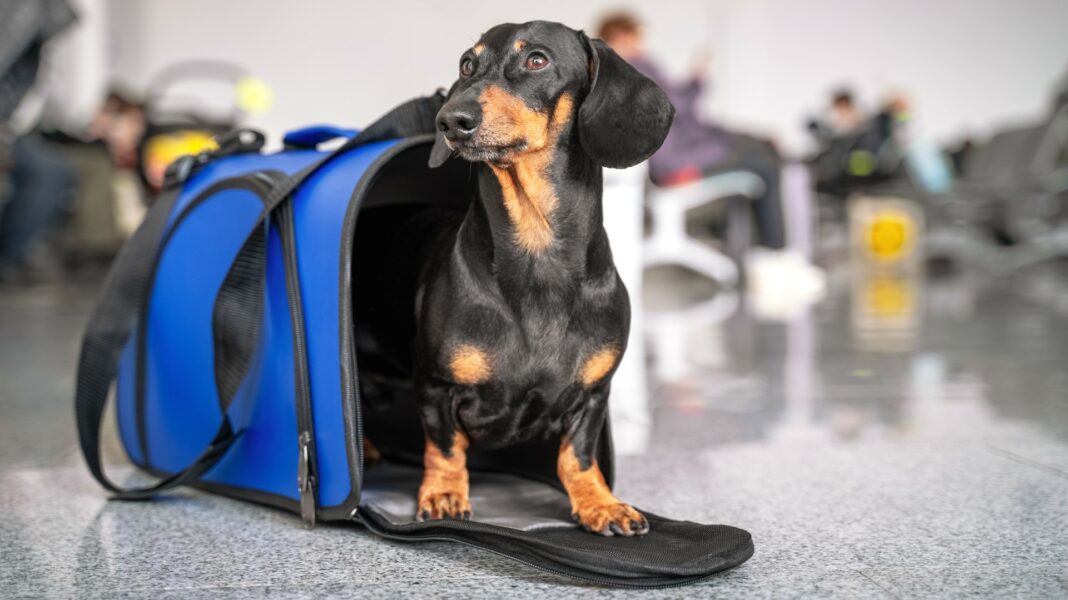
If you’re a travel nurse and you’re thinking about getting a pet, or you’re a nurse who owns a pet and you’re thinking about looking into travel nursing, you might wonder how the logistics of travel nursing with pets will work. Before you go through the process, here are some tips for travel nurses that want to travel with their furry friends.
Can travel nurses bring pets with them?
Travel nurses can almost always bring pets with them. While there may be some restrictions on the type of breeds you’re allowed to bring with you or the number of pets you can travel with, travel nurses have been able to bring pets of all types on trips throughout the United States. It’s important, however, that you talk to your travel nursing agency about your situation before you start the process.
Tips for pet documentation when traveling
Travel documentation is incredibly important in your travel nursing adventure. Here are a few tips to make sure your furry companion is able to stay with you throughout the process.
Research the destination
Your first step should be to check on what requirements your destination has for pets. Certain destinations may be significantly stricter about the travel process than other destinations. For example, Hawaii, which is completely free of rabies, has incredibly strict guidelines for bringing any sort of pet to the islands, and your pet will need to meet specific rabies vaccination guidelines if you’re going to visit Hawaii as a travel nurse.
Bring copies of all documentation your pets have
Next, remember to bring all of your documentation and medical records. This may include:
- Vaccination records
- General vet records and health records
- Breed records
- ESA paperwork for emotional support animals
When you’re doing your research for the destination, check to see what records your destination might require for pets coming into the state.
Get microchips and tags
One of the most important parts of keeping your pet safe is making sure it’s difficult for your pet to escape, and that if they do, you’re able to get back in touch. Outfit your pet with a well-fitting collar, and make sure you add tags with your cell phone number. Make sure your pet is microchipped if they aren’t already. If you’re planning to go outside, then make sure your pet is comfortable walking around in a new location. You may want to get a pheromone collar to keep your pet calm.
Consider getting pet insurance
Many pet owners, even owners that didn’t have pet insurance at home, choose to sign up with pet insurance when pursuing travel nursing. There are many potentials for harm for both humans and animals when traveling, such as auto accidents, and pet insurance can help cover any unexpected emergencies.
Tips for the actual drive or flight
When you finally start your trip, it’s important to keep your pet safe throughout. Here are three top tips.
- Keeping your pet safe on a drive
The Humane Society indicates that the best option for both dogs and cats is to keep them in a crate or a carrier. If you don’t anchor your pet in the car, then they’re at high risk during auto accidents, and they may also be a distraction to the driver. If you want your pet to be especially safe, then consider looking into crates that are large enough to protect your pet in case of an accident.
- Managing pet anxiety
Pets can struggle with anxiety just like humans, and many of them don’t particularly like traveling in the car. If your pet regularly struggles with anxiety issues, then you might want to talk to your regular vet to get a prescription or to provide some recommendations for non-prescription products.
- Taking pit stops and managing overnight stops
You’re going to need to take pit stops for both you and your pet, and depending on how far away the location is, you might also need to take some overnight stops. Remember to pay attention to your pet and stop far before you think your pet might really need to take a pit stop for the best results.
- Preparing for airline requirements
If you’re planning to fly with your pet, do as much research as you can before you get on the actual flight. Check for different requirements for pet carriers, whether you’ll need to pay an extra fee to fly with your pet, and how the plane will handle your pet’s kennel or other carrying case. If your pet is a service animal, then you will be able to bring them on the flight with you; if your pet is an emotional support animal, then you might be eligible for a reduced pet fare or other accommodations. If you have any questions, then it’s always best to talk to the airline as early as possible.
How to manage housing requirements with a pet
There are two common housing options on a travel nurse assignment: company housing, also called corporate housing, and taking the lodging stipend to find your own housing. Here are the pros and cons of both.
Company housing – Pros and cons
Generally, company housing is much easier. Your travel nursing agency will handle the housing for you, including contacting landlords, supplying the money necessary, and ensuring you only have to show up to your home.
However, with this ease also comes some potential concerns. While travel nursing companies will do their best to communicate special requests and make sure you have pet-friendly housing, the landlord does have the last say. You also need to provide the company with the information surrounding what type of pet you have, including pet breed, and you may not have any control over the location, so you might not be able to find a nearby dog park or hiking trail.
Lodging stipend – Pros and cons
The other option available for many travel nursing assignments is the lodging stipend. With this option, the travel nursing agency will provide you with a specific dollar amount that you can use to pay for your housing. This can be better for some pet owners, who might prefer to find their own pet-friendly housing that gives them more freedom and accessibility.
If you’re planning on taking this option, then you can use a website built for short-term housing options, like Zumper. With Zumper, you can find affordable housing in any location, whether you’re trying to find overnight stays or three-month leases. Plus, it’s easier to find local parks, find out about a local community of animal owners, and be certain that your beloved friend will have a great time.
Final thoughts

You can absolutely embark on a travel nursing career with a pet. Although you may need to take a few additional steps to make sure that your pet stays safe and healthy, there are many travel nurses with pets out there. These tips can help you ensure that your pet is healthy and safe during your travel nursing contract, no matter how long or how short it is.
Frequently asked questions about travel nursing with pets
Is it possible to have a dog if you work 12-hour shifts?
Most experts don’t recommend that you leave a dog alone for longer than 8-10 hours at a time. If your nursing job regularly requires 12-hour shifts and you don’t have anyone else at home to take care of your dog, then you might want to invest in a dog walker that can come by halfway through the day and ensure your dog is cared for while you’re gone. The good news is that the internet has made it much easier to find dog walkers anywhere you go, with online options like Wag! available nationwide.
How do I get my dog acclimated to traveling?
There are plenty of training courses to help your dog acclimate to travel. Most dogs love traveling in the car as long as they know there’s nothing to be anxious about, and if you put some active work into helping your dog feel more comfortable with travel, they’ll be excited to travel, rather than being anxious about it.
Are certain breeds of dogs better for travel nurses?
Generally, a smaller dog will work better for a travel nurse. Not only are smaller dogs more likely to be accepted by landlords, but they’re also easier to take with you, and may be easier to train in general. If you’re planning to get a dog, but haven’t gotten one yet, then consider a small or medium-sized breed for best results.



